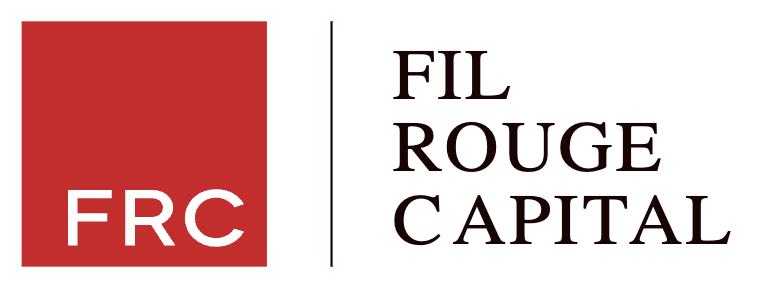They say there’s no such thing as a free lunch. Maybe that’s true. But if you want to promote your business for free, we’ve got good news.
You can drive awareness, leads, and even sales without paid ads if you focus on a few reliable habits.
This guide shows you how to become visible, create useful content, tap communities, and measure what works.
You will not need fancy tools to get started. You do need consistency, a simple plan, and proof that your offer helps real people.
Follow the steps below and adapt them to your market.
Key Takeaways
- Make yourself findable by polishing basic SEO and completing your business profiles.
- Publish helpful, problem-solving content that answers real questions buyers ask.
- Show up on the social platforms your audience already uses and post value-first updates.
- Participate in relevant communities and be helpful before you promote anything.
- Collect emails ethically and send short messages with value, not fluff.
- Track simple metrics weekly so you can double down on what works and drop what does not.
Make Your Online Presence Discoverable
Search and local listings still deliver some of the highest intent traffic. A clear website and complete profiles help people find you without ads.
Optimize Your Website for Search Engines
Search engines reward pages that answer user intent. Start with technical hygiene and on-page clarity, then expand into content.
1. Fix the basics
- Page titles and H1s should state the topic in plain language.
- Write concise meta descriptions that encourage clicks.
- Use alt text for images and descriptive internal links.
2. Organize topics
- Group related pages into a simple structure. Consider a pillar and cluster strategy so each main topic has supporting articles.
- Link between pages to help users and crawlers.
3. Speed and mobile
- Compress images, limit heavy scripts, and make sure text is legible on phones.
4. Set up measurement
- Add Google Analytics and verify your site in Google Search Console. Track impressions, queries, and technical issues.
5. Write for people
- Create content that answers search questions in a credible way. Focus on search intent rather than keyword stuffing.
Claim and Complete Business Profiles
Local buyers often decide based on listings they see on maps or in knowledge panels. You can claim and enhance these profiles in minutes.
- Claim your listing on Google Business Profile. Add categories, hours, address, phone, and a concise description. Upload real photos, collect reviews, and reply to each one.
- Add your company to Bing Places to cover Microsoft and some voice assistants.
- If you serve iOS users locally, set up Apple Business Connect.
- Fill out services, menus, price ranges, and booking links where available.
A quick weekly routine helps: update hours, publish a short post, add a new photo, and answer Q&A. These signals show you are active and trustworthy.
Build a Social Presence That Engages
Social channels can generate reach without spend when posts are useful, consistent, and easy to share.
Focus on Platforms Your Audience Uses
Do not try to be everywhere. Pick one or two channels where your buyer spends time.
- Consumer brands often win on Instagram and TikTok.
- B2B teams may find traction on LinkedIn and YouTube.
- Local services still perform on Facebook Groups and Nextdoor.
Use data to guide your choice. Explore platform trends by age group: it can help align your channel mix with your customers.
Share Practical Tips and Behind-the-Scenes Content
People pay attention when you teach, show process, or tell a quick story.
- Quick tutorials, checklists, teardown threads, and before-and-after visuals work well.
- Short behind-the-scenes clips build trust. Show how you make or deliver the product.
- Social proof is important. Share real customer quotes or UGC with permission.
Consider a simple 70/20/10 mix: 70 percent helpful content, 20 percent community spotlights, 10 percent direct promotion. For inspiration, review ideas for the top types of social media posts for engagement.
Produce Valuable Content
Content that solves real problems attracts traffic and primes conversions at no cost.
Create Guides, Blog Posts, or Videos
A simple editorial system keeps you consistent.
- Start with FAQs from sales calls, email threads, and support tickets.
- Outline a post that answers the problem in steps, includes a quick checklist, and ends with next actions.
- Write in plain language. Use short paragraphs and subheads.
- Add one simple visual per post to help scanning.
- Repurpose into short videos or carousels.
- Select an AI tool to create content for you.
If you want a deeper plan for regular publishing, this guide on startup blog success covers cadence and editing workflows. Focus on helpful content and the leads will follow.
Use Email and Direct Outreach Smartly
Email still converts at a high rate because subscribers gave you permission.
- Offer a short weekly tip, template, or checklist to earn sign-ups.
- Send simple-text emails. One idea per message, one link, one ask.
- Build a three-part sequence: welcome, value delivery, soft ask.
- Use subject lines that promise a clear outcome in a few words.
Stay compliant with the CAN-SPAM Act compliance guide. For outreach, write short notes to partners, podcast hosts, or local newsletters. Lead with what you can contribute, such as a case study or a resource.
Promote Your Business for Free Through Communities
Communities can move the needle when you contribute value first. Think Reddit, Slack groups, Discord servers, LinkedIn groups, professional forums, and local chambers.
- Observe norms for a week. Note what questions repeat and how members help each other.
- Share a practical answer or a resource you created. Link only when it adds clear value.
- Create a helpful post series. For instance, four weekly tips or a monthly AMA.
- Offer office hours or short audits for members. Document anonymized learnings in a post.
- Ask moderators about promo days or partner posts. Many groups allow vendor threads.
The goal is to earn trust, then invite people to your newsletter, webinar, or a useful guide. A small, active community can outperform a large, quiet one for organic reach.
Track Performance and Adjust
What you measure improves. Keep a tight loop so you learn fast without drowning in dashboards.
- Daily: check Search Console queries, top pages, and any errors.
- Weekly: review social saves, shares, and profile clicks.
- Monthly: review email opens, clicks, and replies.
- Quarterly: analyze lead sources, time on page, and conversion rate.
Add UTM parameters to links with Google’s Campaign URL Builder. Pick one key performance indicator (KPI) per channel as your leading indicator. If saves or replies rise, you are likely on the right path.
Tap Partnerships and Earned Media
Partnerships multiply reach without spend. Aim for co-created value that both audiences want.
- Co-market with complementary businesses. Run a joint workshop, mini-guide, or checklist. Each side emails their list, then shares the replay.
- Pitch guest posts or a short how-to video for a partner’s blog or channel. Offer a unique angle tied to their audience’s pain points.
- Swap newsletter features. A short blurb with a useful link helps both lists.
- Join local or niche directories that actually send traffic, not link farms.
- Offer quotes to journalists or creators on topics you know well.
Create a quick partner plan: list ten potential partners, outline a give-first idea, draft one pitch email, and schedule a 20-minute call.
Partnerships should feel win-win, or they will not last.
Summary
You can promote your business for free if you focus on actions that compound over time.
Make your profiles complete and keep them updated.
Publish content that answers real questions. Select an AI tool to create content for you.
Show up in communities where your buyers already interact. Use email to stay in touch and add value directly.
Track a few simple numbers each week. Double down on what works and drop what does not. Partnerships, earned media, and consistent publishing can expand your reach without cost.
Build momentum step by step. Over time, these habits create visibility, leads, and sales without paid ads.
And of course, if you prefer, you can always consult professionals.
Frequently Asked Questions
Q: What is the fastest way to promote your business for free?
A: Tighten your Google Business Profile, post a useful how-to thread on your main social channel, and send a short email to your list. Those three moves can create quick visibility and clicks.
Q: How long before you see results from organic marketing?
A: Social engagement can improve within weeks. Local SEO may take 30 to 90 days to reflect in rankings. Content often needs 60+ days to settle in search. Consistency shortens the timeline.
Q: Do you need a blog to get organic traffic?
A: Usually yes, although not always. Helpful landing pages, detailed FAQs, and resource hubs can rank. A blog helps you cover more questions, which drives more queries and internal links.
Q: Which social channels should a small business prioritize?
A: Choose one or two where your customers are active. Consumer services often lean on Instagram or TikTok. B2B teams see consistent returns on LinkedIn and YouTube. Depth beats breadth.
Q: What are good free marketing ideas for local businesses?
A: Weekly posts on your business profiles, a simple referral card, short how-to videos, and community workshops. Pair that with regular review requests to strengthen local SEO signals.
Q: Is cold email worth trying without a budget?
A: Yes, if it is permission-conscious and relevant. Personalize, keep it under 120 words, offer value first, and include a clear opt-out. Track replies and refine your message over time.



